Classic pesto is beloved for a reason. It's super easy, packed with flavor, and so versatile. You can add it to almost anything, use it as a marinade, make it a dip, a spread, or whatever you want. It's so great; everyone should have a jar of it in the fridge at all times.
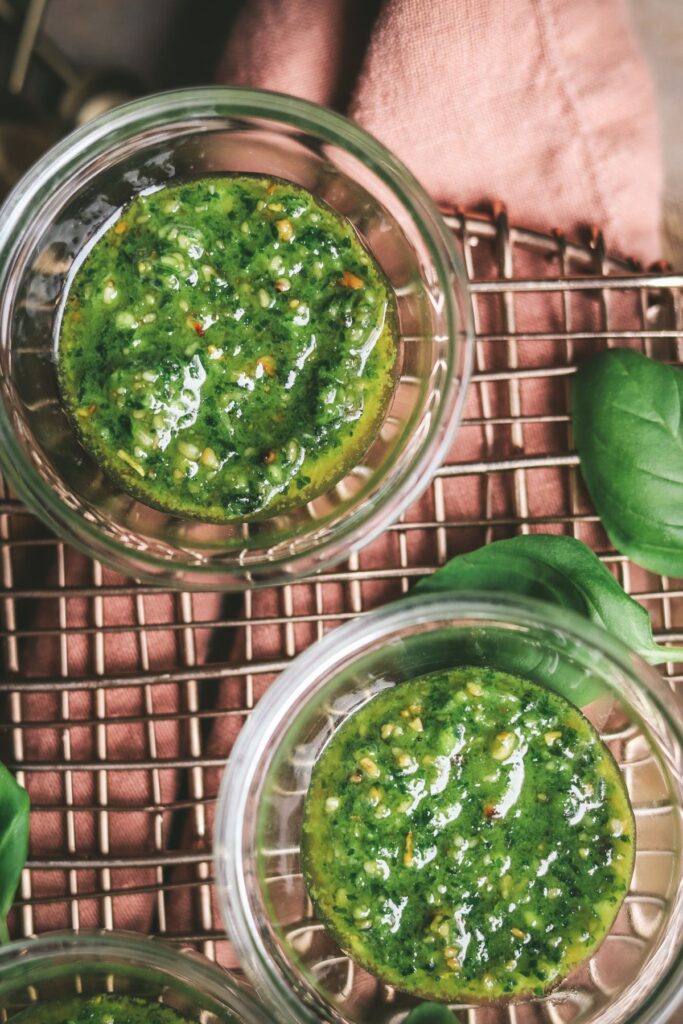
Pesto is a fragrant and flavorful sauce that originates from Genoa in Northern Italy. Its key ingredients are fresh basil leaves, garlic, pine nuts, and Parmesan cheese, which are blended together with olive oil to form a smooth paste-like sauce. It's often served with pasta or used as a spread on sandwiches or pizza. But, as mentioned above, you can do whatever you want with it.
Pesto is awesome because of its bold and fresh flavors that complement many dishes. Its versatility and simplicity make it a go-to sauce for any occasion.
Jump to:
Frequently Asked Questions
You can use walnuts, almonds, cashews, or sunflower seeds instead of pine nuts in pesto.
Homemade pesto will last in the fridge for up to 1 week if stored in an airtight container.
Yes, you can freeze pesto for up to 6 months in an airtight container or freezer bag.
To make vegan pesto, replace the Parmesan cheese with nutritional yeast or a vegan cheese alternative.
Why You're Going to Love this Recipe
- It's easy and quick to make in a food processor.
- The fresh ingredients like basil and garlic give it a bold and flavorful taste.
- It's versatile and can be used as a sauce for pasta, spread on sandwiches or pizza, or used as a dip.
- It's a classic and traditional Italian recipe that has been enjoyed for centuries.
- It's healthy and packed with nutrients like vitamins, antioxidants, and healthy fats.
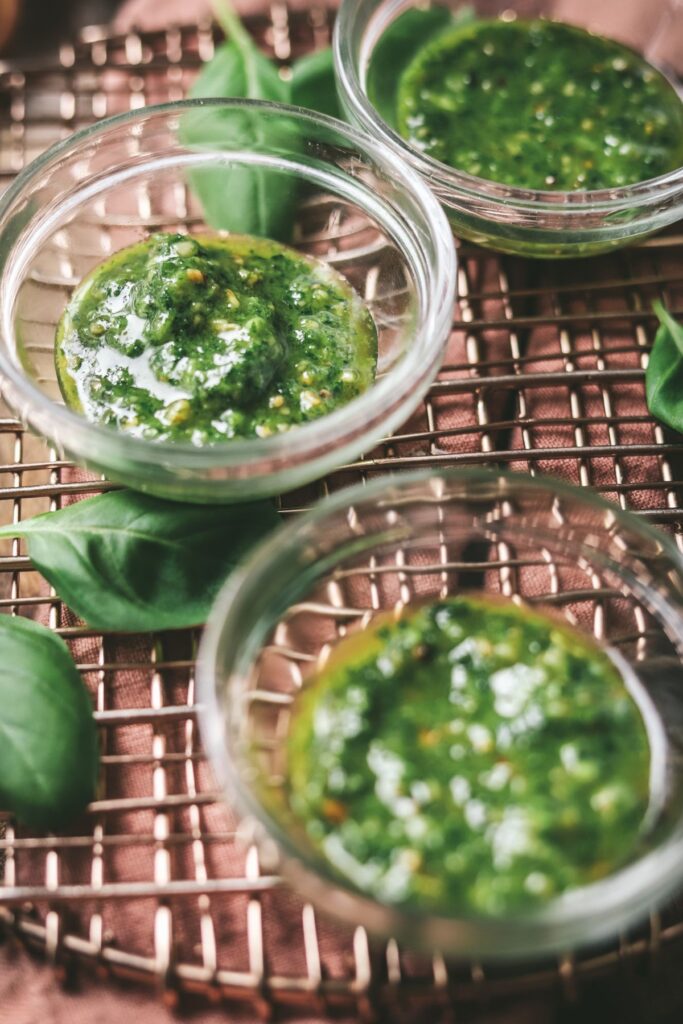
Where Did Pesto Come From?
Pesto has its roots in the Italian region of Liguria, specifically in Genoa. The sauce dates back to Roman times when they used to grind garlic, cheese, and herbs into a paste to eat with their food. However, the modern version of pesto, which we know today, was developed in the 19th century. The traditional recipe calls for Genovese basil, garlic, pine nuts, Parmesan cheese, and olive oil, which are blended together to create a fragrant and flavorful paste.
How to Use It
Pesto is so versatile, you can use it in pretty much any way you dream up. The flavors play well with almost anything else, so feel free to experiment!
Toss it with pasta, like spaghetti or penne, for a quick and easy meal.
Spread it on toasted bread or bagels for a tasty and simple breakfast.
Use it as a marinade for grilled chicken, fish, or vegetables.
Add it to roasted or mashed potatoes for a burst of flavor.
Mix it with mayo or yogurt for a flavorful sandwich spread.
Use it as a dip for breadsticks, crackers, or veggies.
Spread it on a pizza crust instead of tomato sauce for a delicious pizza topping.
Mix it with cream cheese or hummus for a flavorful dip.
Stir it into soups or stews for added depth of flavor.
Use it as a topping for grilled meats or fish for a simple and flavorful dish.
Ingredients
Basil: provides a fragrant and fresh flavor.
Garlic: adds a pungent taste.
Pine nuts: provide a nutty and rich flavor, while also giving it a creamy texture.
Parmesan cheese: adds a salty and sharp taste, while also giving it a smooth consistency.
Olive oil: binds all the ingredients together to form a smooth paste-like sauce, while also adding depth of flavor.
Together, these ingredients create a deliciously balanced flavor profile. The basil and garlic provide a fragrant and fresh taste, while the pine nuts and Parmesan cheese add richness and depth of flavor. The olive oil helps to bind all the ingredients together and gives the sauce a smooth texture.
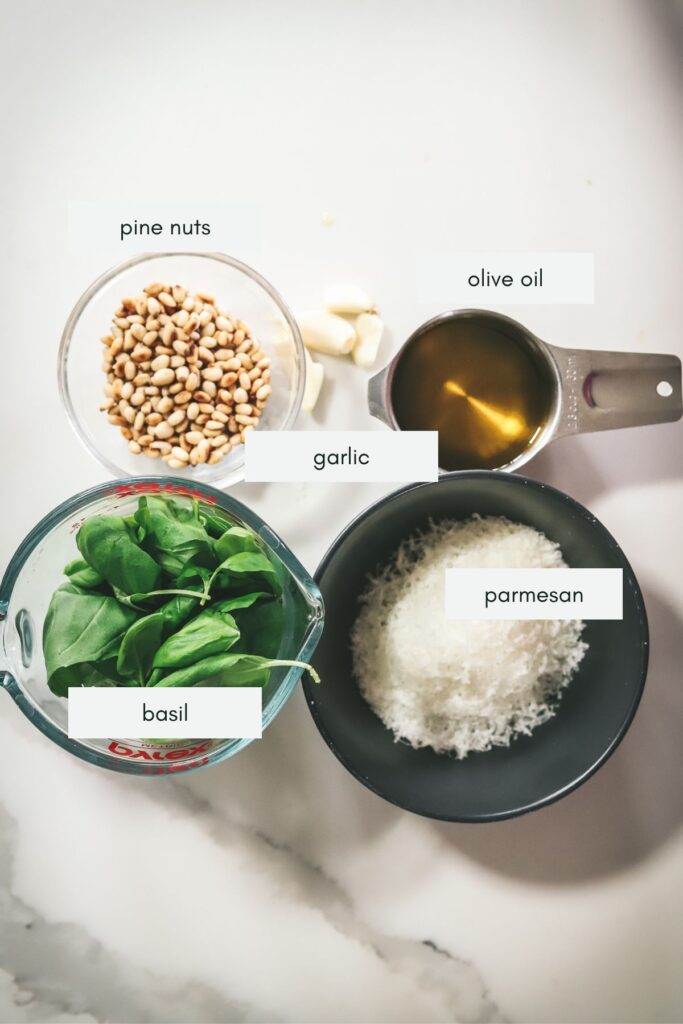
How to Make Easy Pesto
You'll start by gathering all your ingredients and making sure they're fresh and ready.
Then, you'll need a food processor, blender, or mortar and pestle (I highly recommend the food processor, but if you're feeling like a workout, mortar, and pestle will do just fine). Add the garlic, basil, pine nuts, and parmesan and pulse or grind them until they form a coarse paste.
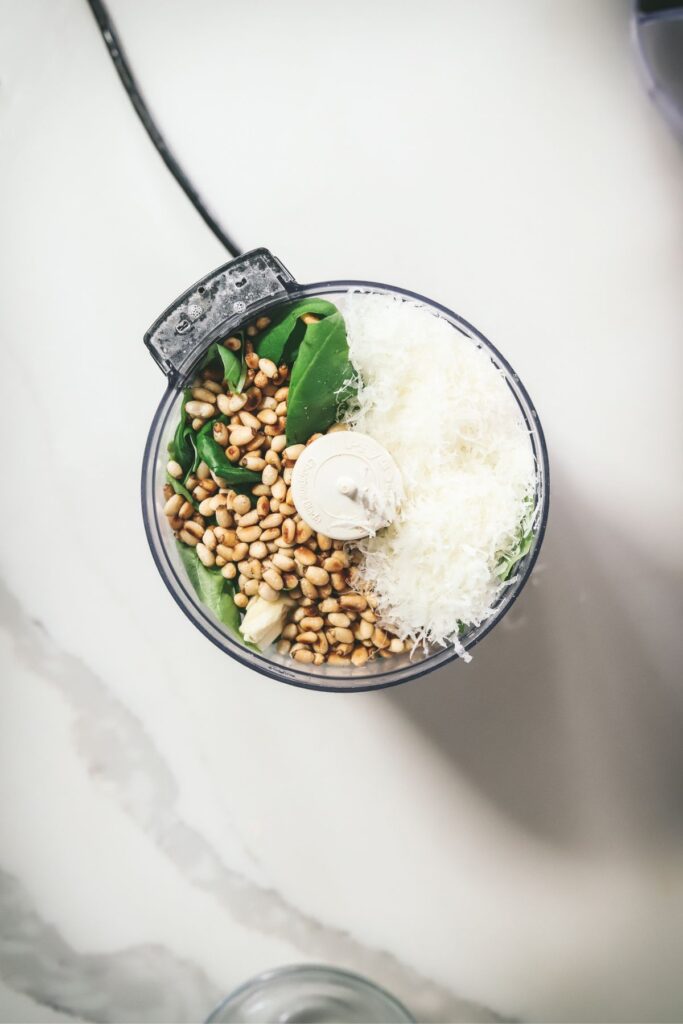
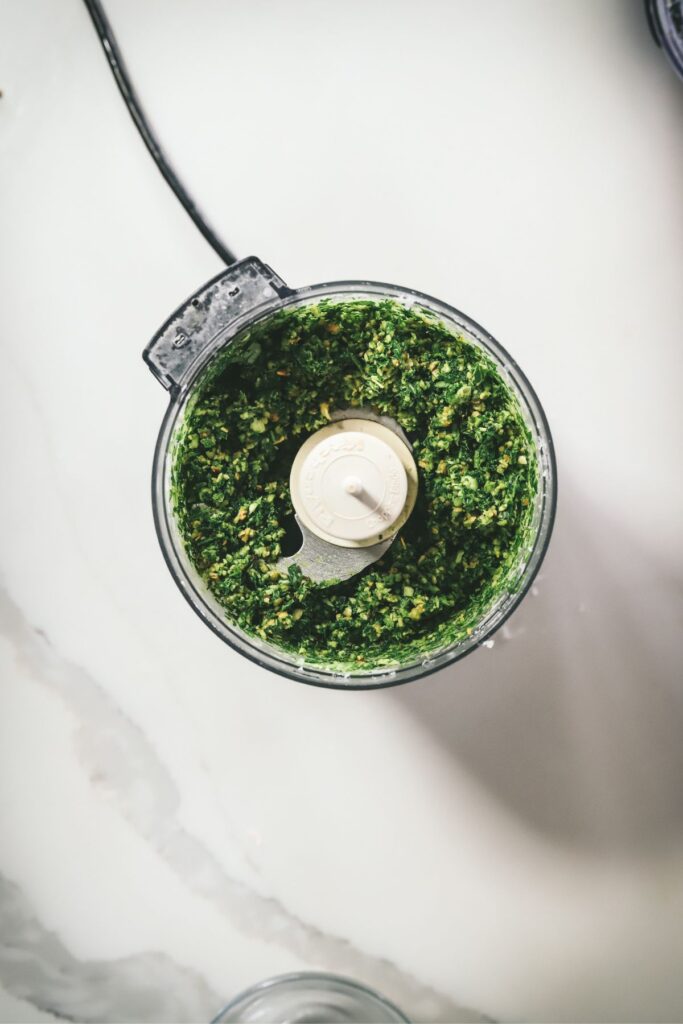
Next, add the olive oil until everything is well combined, and the pesto has reached your desired consistency.
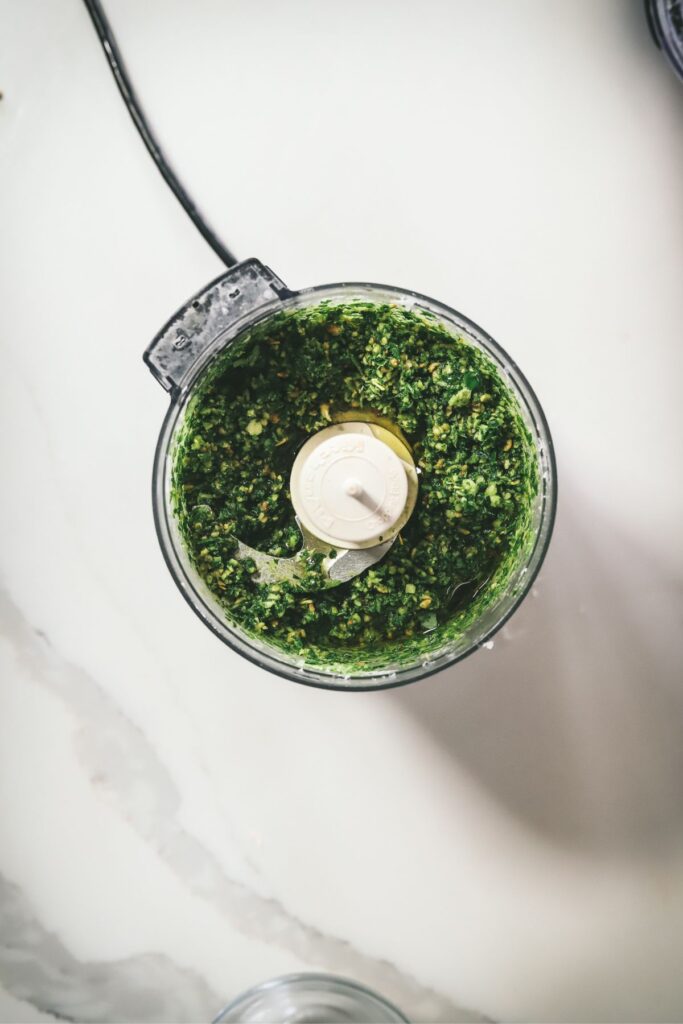
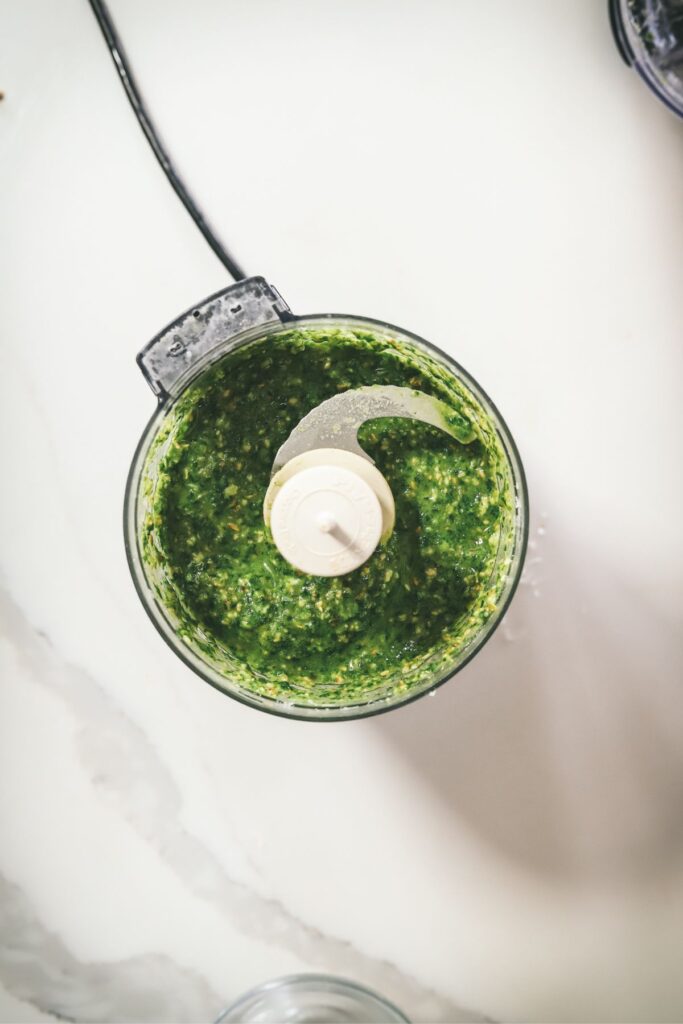
Be sure to taste the pesto as you go and adjust the seasoning as needed. If it's too thick, you can add more olive oil; if it's too thin, you can add more cheese or nuts.
And that's it! Once you've made your pesto, you can use it right away or store it in an airtight container in the fridge for later. It's a versatile sauce that can be used in so many different ways, so have fun experimenting with it in your cooking!
Variations
Pesto Rosso: Replace some or all of the basil with sun-dried tomatoes to create a rich and tangy pesto.
Arugula Pesto: Use arugula instead of basil to create a peppery and slightly bitter pesto that pairs well with grilled meats, vegetables and pasta.
Spinach and Walnut Pesto: Replace the pine nuts with walnuts and use spinach instead of basil to create a slightly sweeter and milder pesto.
Cilantro Pesto: Use cilantro instead of basil to create a bright and flavorful pesto that's perfect for adding to tacos or grilled fish.
Kale Pesto: Use kale instead of basil to create a hearty and nutritious pesto that's packed with vitamins and fiber.
Mint Pesto: Use fresh mint leaves instead of basil to create a refreshing and zesty pesto that's perfect for pairing with lamb or roasted vegetables.
Roasted Red Pepper Pesto: Add roasted red peppers to your pesto to create a smoky and sweet flavor that's perfect for spreading on sandwiches or using as a dip.
Lemon Pesto: Add lemon zest and juice to your pesto to create a bright and citrusy flavor that's perfect for tossing with pasta or as a marinade.
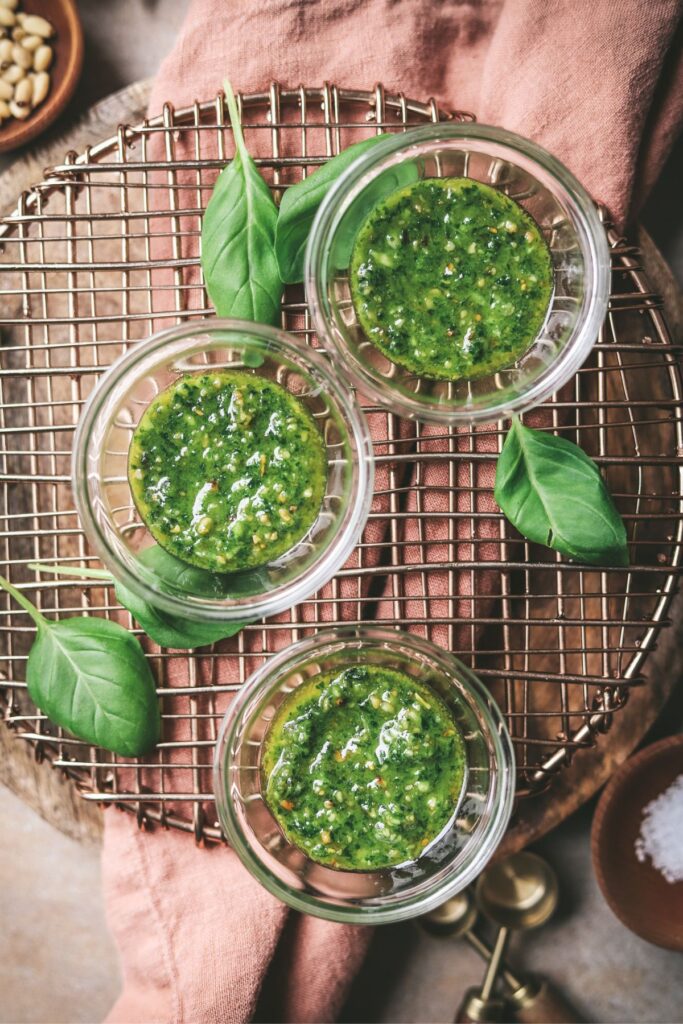
Wine Pairings
Pairing wine with pesto can be tricky due to the strong flavors of basil and garlic. Here are some wine pairing suggestions that complement the flavors of:
Sauvignon Blanc: This white wine is a classic pairing. Its bright acidity and herbaceous notes complement the basil and garlic in the sauce.
Pinot Grigio: Another white wine that pairs well, Pinot Grigio has a light body and crisp acidity that complement the fresh and herbal flavors of the sauce.
Vermentino: This Italian white wine has a light and zesty character that works well with pesto's bright and tangy flavors.
Chianti: This Italian red wine has a medium body and high acidity that complements the herbal and garlic notes.
Pinot Noir: A light-bodied red wine that pairs well, Pinot Noir has earthy and herbaceous notes that complement the flavors of the sauce.
Remember, these are just suggestions, and personal taste is always the most important factor in pairing wine with food. So, feel free to experiment with different wines and find the perfect pairing for your taste buds!
Storage and Freezing
Fresh pesto can be stored in the fridge in an airtight container for up to a week. Pro tip: cover the top of the pesto with a thin layer of olive oil to keep it from drying out. The layer of fat helps to keep an extra seal on it.
You can freeze pesto and keep it for up to six months. For single serving size - try freezing it in ice cube trays!
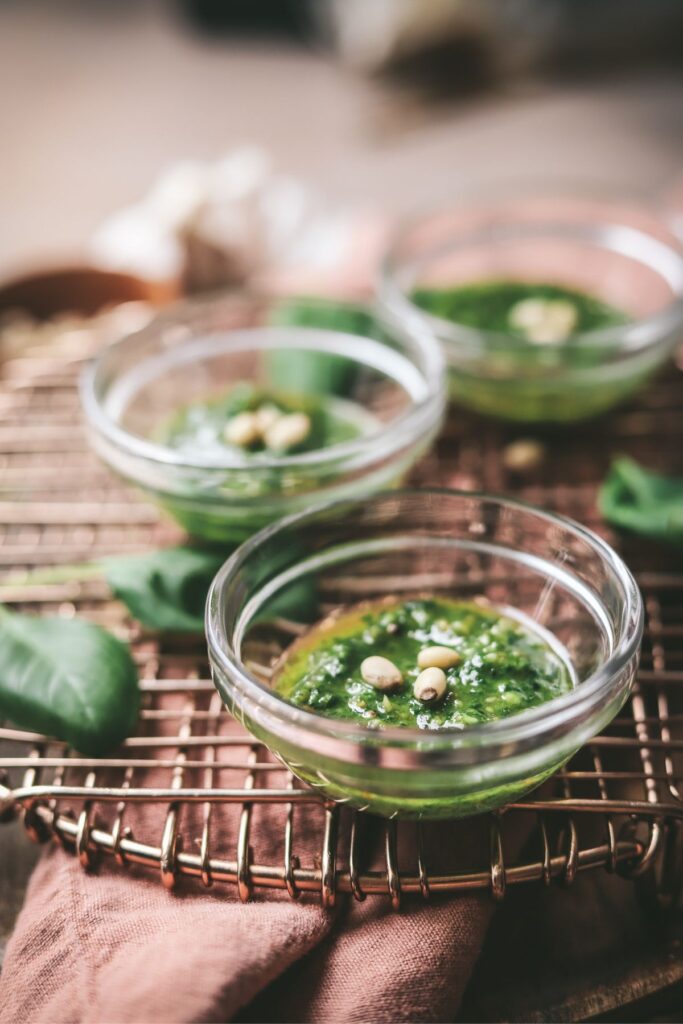
Pro Tips
Use fresh, high-quality ingredients: Use fresh basil, good quality extra virgin olive oil, freshly grated parmesan cheese, and high-quality pine nuts. Fresh ingredients will ensure that your pesto has the best flavor. And there are so few ingredients, it becomes all the more important that every one of them is high quality!
Toast the pine nuts: Toasting the pine nuts before adding them to the pesto will bring out their nutty flavor and add a nice crunch to the pesto. This is one of my favorite ways to elevate the pesto from good to gourmet.
Add garlic to taste: Adjust the amount of garlic to your taste. If you prefer a milder flavor, use less garlic or sauté it before adding it to the pesto. If it goes in raw, it brings a bit of spice to the part.
Blend in batches: If you're making a large batch of pesto, blend it in batches to ensure that it blends evenly and has a consistent texture.
Add lemon zest: Adding a little bit of lemon zest to your pesto will give it a fresh, zesty flavor.
Adjust seasoning: Taste your pesto and adjust the seasoning to your liking. Add more salt, pepper, or lemon juice as needed.
Other Awesome Sauces and Condiments
📖 Recipe
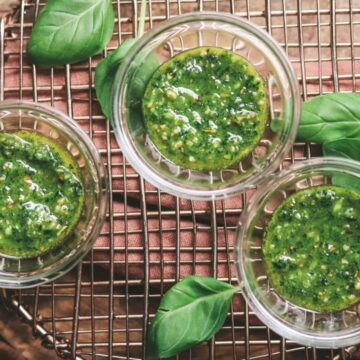
Easy Pesto
Equipment
- Food processor
Ingredients
- 2 C basil leaves packed
- 2 cloves garlic
- ¼ C pine nuts
- ½ C parmesan cheese
- ½ C olive oil
- ½ teaspoon salt
- ¼ tsp pepper
Instructions
- Toast the pine nuts in a small skillet over medium heat until lightly browned, about 3-4 minutes.
- In a food processor, combine the toasted pine nuts, garlic, parmesan and basil leaves. Pulse until finely chopped.
- Add the olive oil, and pulse until combined and at the desired consistency. Taste and season with salt and black pepper as needed.
- Serve the pesto immediately, or store in an airtight container in the refrigerator for up to 1 week.
Video
Notes
Nutrition
Hi, I'm Cara! I'm a food writer, journalist, and recipe developer. I'm obsessed good food, good wine, good cocktails and entertaining. I've picked up a few tips over the years, and love sharing them with others.


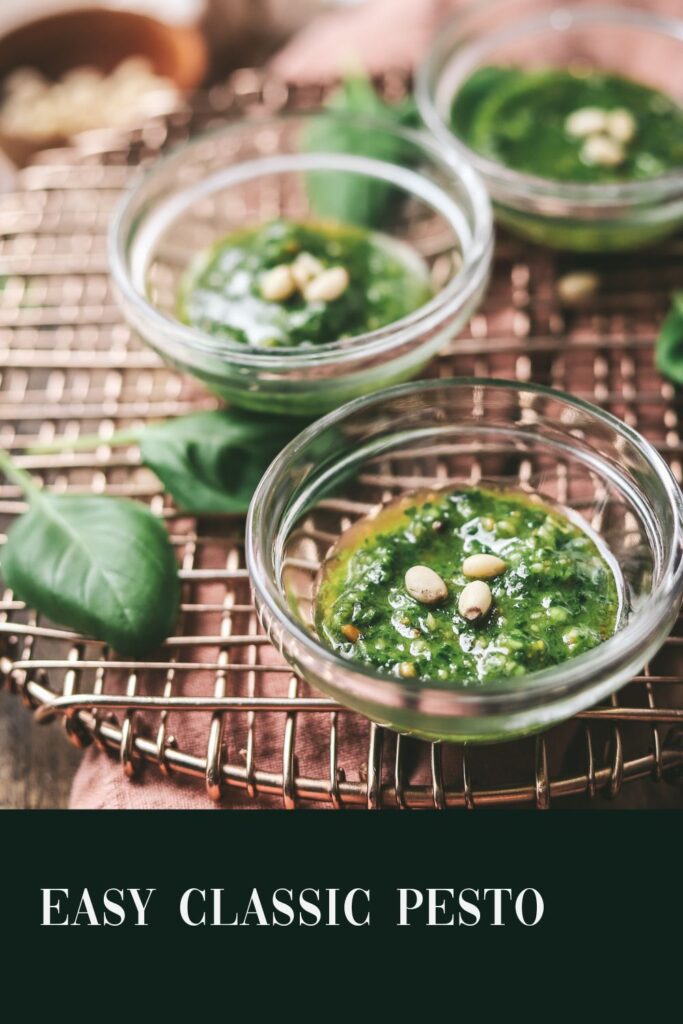
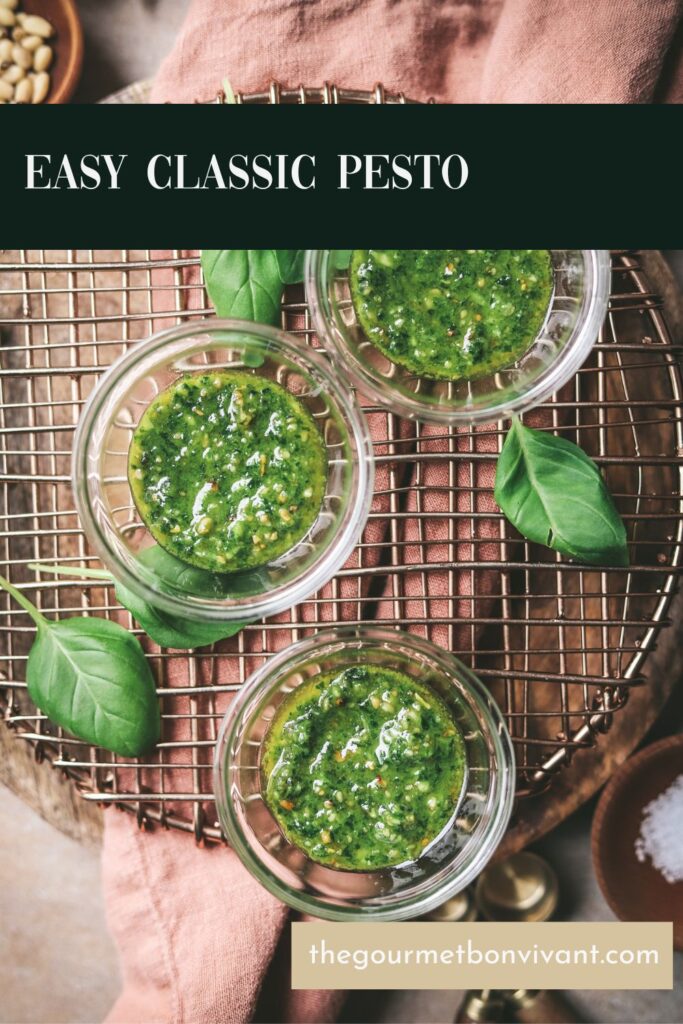
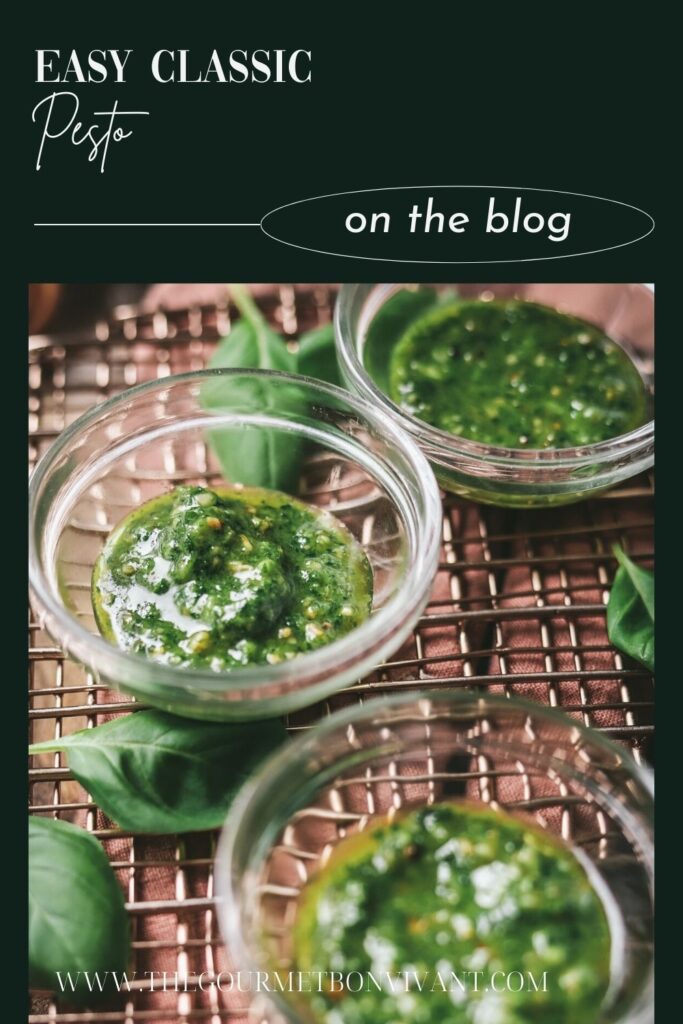
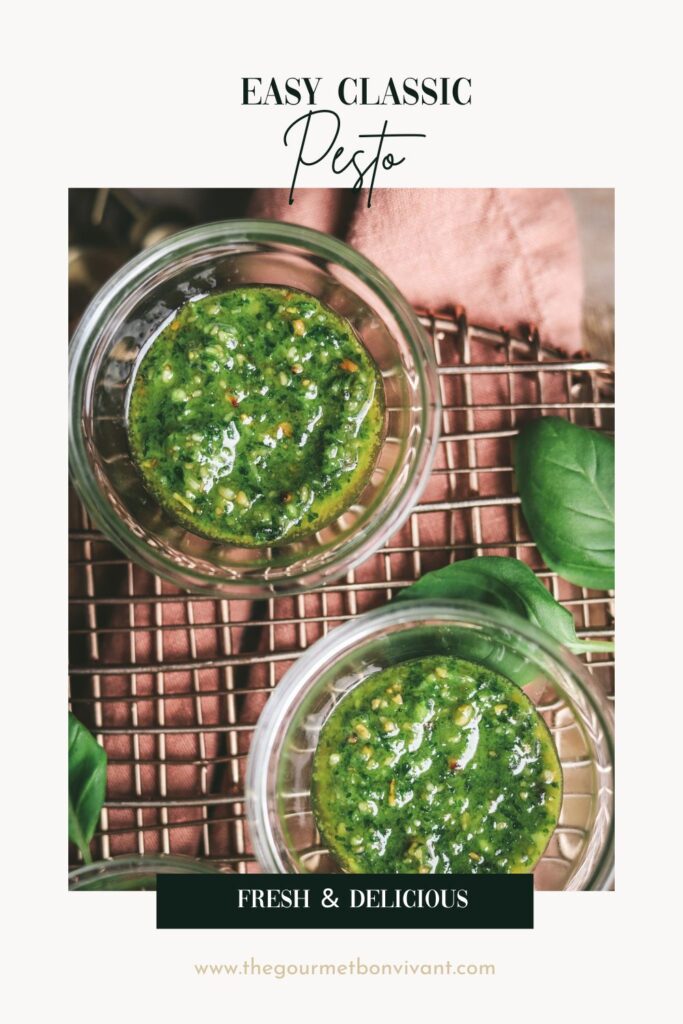





Leave a Reply